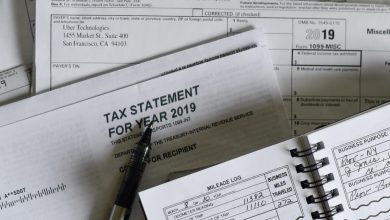How to File Taxes for Beginners

Everyone has a certain level of tax liability, and the filing of your taxes simply helps you to understand your own. Tax liability refers to the amount of debt that is owed by any one individual in the form of taxes. Additionally, filing allows you to schedule all your required payments, and it even allows you to request refunds where applicable. There are cases where there has been an overpayment, and the refund simply balances things out by returning the excess portion to you.
The income that is reported can fall under several categories, such as capital gains, interest, salaries, or any other profitable venture. Filing must be done by both individuals and businesses that have an income to report that falls under any of the stipulated categories.
The frequency of filing depends on your country of residence. In most cases, however, the filing is done annually.
Your tax returns are filed to the stipulated entity that corresponds to your location. In the United States, there are two potential alternatives. The first is a tax collection agency that falls under the purview of either local or state government. The second, and arguably more common, is the Internal Revenue Service (IRS). The forms you use can be created by any of these tax collection entities.

Tax Return Breakdown
The tax return starts with the provision of all relevant personal information by the taxpayer. This includes personal information, dependent information, and the applicable filing status. There are three subdivisions to a tax return
Income Section
As the name implies, this is where all sources of income are listed. The W-2 tax form is the most popular reporting tool in this regard. This form is also known as the Wage and Tax Statement. Employers are mandated to send this document to all their employees and to the IRS at the close of each year.
This form illustrates the annual salary of the employee and the amount of tax that is withheld from the employee’s paycheck. Some people pay their own taxes, but others don’t need to because their employers use salary deductions to pay taxes to the government on their behalf. Employees who fall under the latter category are W-2 employees.
All forms of income must be reported, such as capital gains, royalties (not applicable in all countries), self-employment income, dividends, and salaries.
Deduction Section
Deduction requirements are not consistent across jurisdictions, which is the reason for the immense variety. These deductions lower a taxpayer’s tax liability. This is achieved by lowering a person’s taxable income. These deductions are expenses that the person deals with throughout the year.
These expenses are subtracted from a person’s gross income, which yields a figure illustrating the amount of tax owed to the government. Of course, not every expense is considered a deduction. If that were the case, then your taxable income would be based on whatever you managed to save for the year.
Deductions can either be standard or itemized. Standard deductions are flat fees paid for the year that are calculated based on your situation. For example, single taxpayers would pay $12,400, while married taxpayers would pay $24,800 if they file jointly for the 2020 tax period. Itemized deductions are based on certain specific expenses, such as mortgage interest, property taxes, dental bills, etc.
A taxpayer can choose to use standard or itemized deductions. The choice is usually made based on which results in more favorable deductions, though there are some people who make the choice based on convenience. Standard deductions are easier to deal with because the rate is flat and set. If you choose to go the itemized deduction route, then you must calculate all the relevant expenses for the deductions to be accurate. Business expenses are almost always deductible.
Once the deduction cost is calculated, it is then subtracted from gross income, which helps to determine the tax rate. This rate is, of course, based on the adjusted gross income figure.
Tax Credit Section
These are figures that help to offset the taxes owed and tax liabilities. Applicable tax credit varies greatly based on your jurisdiction. Tax credit tends to depend on certain necessities, such as care for dependent children and seniors, education, pensions, etc.
Once income, deductions, and credits are sufficiently reported, the return is ended by the taxpayer. This conclusion provides either the amount that is owed or the excess amount that is a result of an overpayment.
While overpaid taxes can be refunded, they may also just be rolled over into the following tax year. Payment remittance can be done as scheduled tax payments, or they can be done by paying a single sum. Tax payments can be a burden, so many self-employed people make a quarterly advance payment to make things more bearable.

Filing Your Tax Return
Now that you are familiar with all the concepts that revolve around filing, it is time to look at the process involved.
The Need to File
First, you need to know whether you need to file a tax return at all. For most people, this question is an emphatic yes. However, you should still be certain before you start burning time with an unnecessary process.
There are several factors that go into it, such as:
- Your filing status
- Your age
- Your income being equal to or greater than the established thresholds
- Your being self-employed with a net income of at least $400
- Your receipt of distributions from accounts such as an Archer Medical Savings Account
- Your owing of taxes on tax-favored accounts
- Your owing of taxes on household employees
Of course, there are other factors too, and some of these factors can even contradict. For example, you may think you don’t need to file taxes because you’re legally a minor, but you may still be required to because of your level of income.
Many people still file even when they find out that they don’t have to, as you could end up with a beneficial tax break down the line.
Gather Your Data
After you’ve determined your need to file, it’s time to round up some information. Even if you’ve hired someone to prepare your tax return, you still need to be involved here. At this step, you need to pull together all proof of income, tax-deductible expenses, or anything that could potentially yield a tax credit. Here’s a checklist you can use for what you need:
- Social Security numbers of you, your dependents if you have any, and your spouse
- Your W-2 form
- Your 1099 form
- Contributions to a retirement account
- Medical bills with outstanding reimbursements
- Mortgage interest
- Property taxes
- Education expenses
- Paid local and state taxes
- Tax returns for the previous year
- Donations to charity
Choose Your Form(s)
One of the most important pieces of the puzzle is choosing the form(s) that apply to your unique situation, so your tax filing process is done adequately. You can check out all the forms in detail and their purposes to find out the extent to which they apply to you.
DIY or Professional?
Filing your tax return is a process that you are more than capable of doing on your own. Be that as it may, you may find the process to be arduous and tedious. Typically, tax software is used if you’re doing it on your own. There are many software alternatives that you can take advantage of. In fact, there are many top-tier tax software providers that are willing to give free versions of their software if your tax situation is simple. The IRS also gives free software to those who have an adjusted gross income that is less than $69,000.
It’s best to do the filing on your own in most situations. However, you may want to consider hiring a professional if any of the following applies to you:
- You own a business, or you have secondary sources of income
- You find the forms you receive in the mail hard to understand
- You need tax advice and strategic planning
Use Free Tax Help
While not everyone qualifies for free tax help, it’s something that you should jump at the chance to use if you do qualify. There are two main programs that offer free tax preparation services. These are the Volunteer Income Tax Assistance (VITA) program and the Tax Counseling for the Elderly (TCE) program.
The people who qualify for either of these programs usually only speak limited English, make $56,000 or less, are older than 60, or have disabilities.
Prepare Early
It’s always advisable to start your tax-filing in advance. Once you get into the late bracket, you start throwing money away, which is just a waste. Consider the following:
- All outstanding payments have interest applied if they are not paid by the designated April deadline. This is a 5% or 6% interest rate per annum.
- There may also be a 0.5% late-payment penalty monthly up to 25%
- If the return itself is filed late, there is a penalty that is equal to 5% of your due monthly payment, with a maximum of 25%
Manage Your Tax Situation
You don’t want big swings in either the payment or refund direction. If you must pay a large sum to the IRS in April, you may want to consider having more tax withheld from your paycheck. Likewise, if your refund is huge, then you may want to consider lowering the amount that is deducted from your paycheck monthly.



